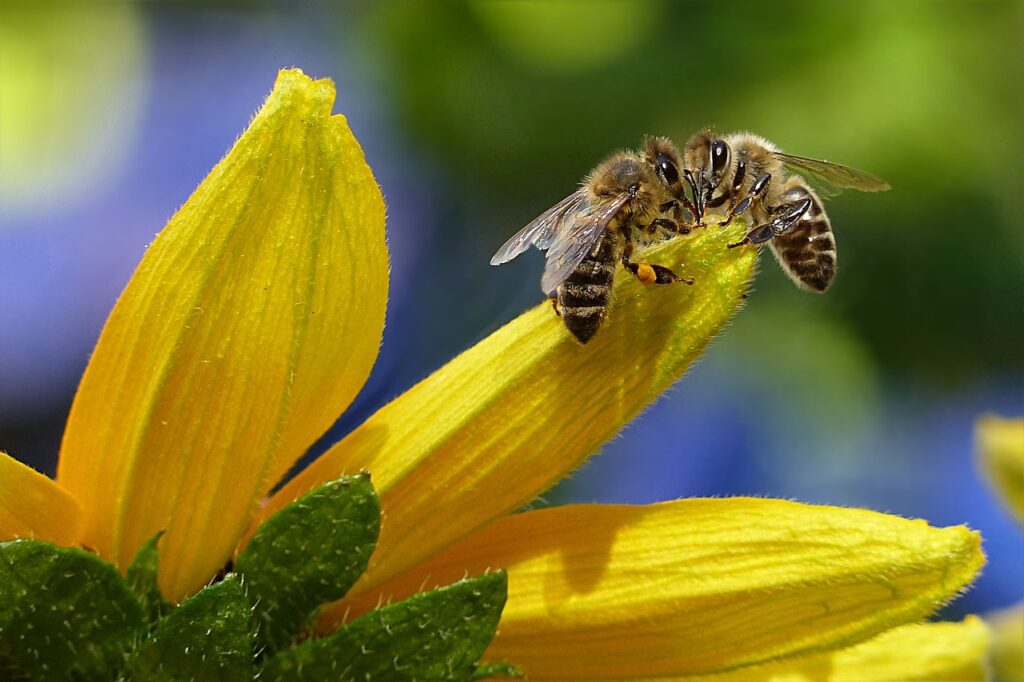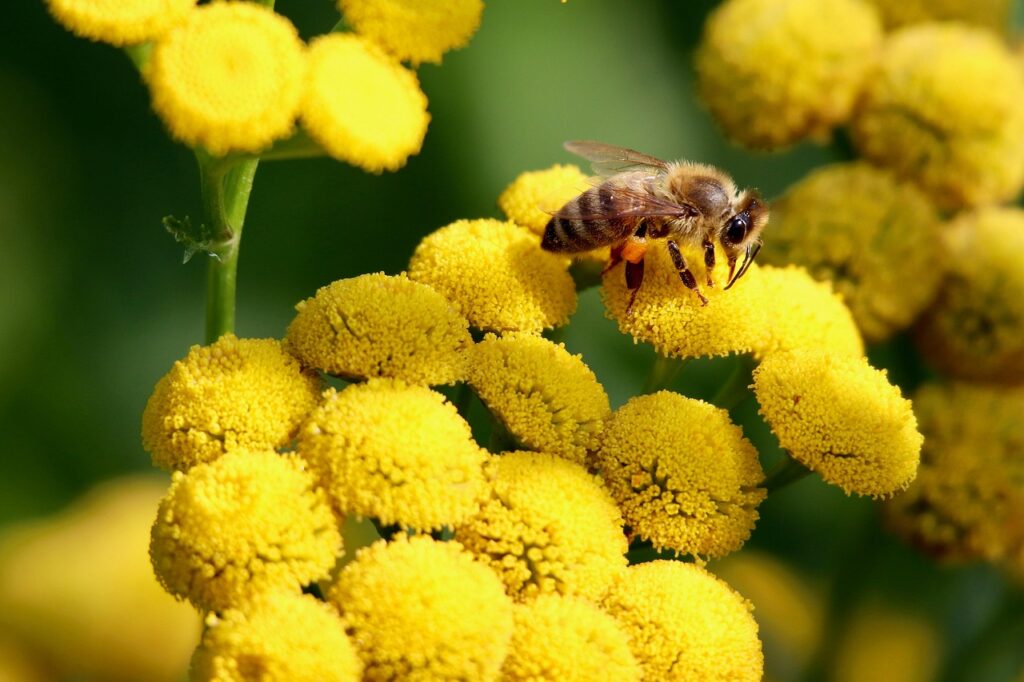
Several newly discovered bee species and significant new records have been documented in 2025. These discoveries mark advances for both ecological research and conservation, offering new insights into global bee diversity.
This highlights the ongoing importance of field surveys and genomics in uncovering hidden species.
A Major Year for Bee Biodiversity Research
- Hylaeus paumako (Hawaii)
A previously unknown species was identified in a conservation area on Moloka‘i. Notably, Hylaeus paumako is distinguished by its all-black face, a unique trait among male Hawaiian bees. Discovery credit is shared by the DLNR Division of Forestry and Wildlife and the Moloka‘i Plant Extinction Prevention Program.[1] - Andrena androfovea (“Little Blue Bee,” Texas & Oklahoma)
Researchers at the University of Oklahoma formally described Andrena androfovea, a matte blue mining bee with unique behaviors and a strong affinity for plants in the Solanaceae (tomato) family. Genomic analysis found it is unrelated to any previously described subgenus within Andrena, marking an exceptional evolutionary find. Its branch separated from others approximately 12.6 million years ago.[2][3][4][5] - Megachile (Austrochile) Expansion (Australia)
Australian scientists described 71 new native species in the Megachile (Austrochile) group (“resin pot bees”). These species, once thought to comprise only seven members, now represent extensive hidden diversity across every state except Tasmania. They construct distinctive resin pots for their broods.[6] - New & Rare Bee Records (Washington State, USA)
Volunteers with the Washington Bee Atlas recorded 15 bee species never previously collected in Washington, some not seen since 1917. This includes eight newly documented in Chelan County, revealing regional biodiversity and providing new survey baselines.[7][8] - Megachile Species Additions (Jammu/NW Himalayas, India)
Nine Megachile bee species were found for the first time in Jammu and the northwestern Himalayas of the Indian subcontinent. These discoveries underscore the biodiversity of India’s largest bee family and highlight the underexplored richness of the region.[9] - Enica adelphesp. nov. (South Africa)
A new species within the Bombyliidae genus Enica was described from the Richtersveld in the Northern Cape, South Africa. This work clarifies the taxonomy and regional distribution of important pollinators in biodiversity hotspots.[10] - Italy and Minnesota (USA) – New Records
Recent observations have resulted in new state/country records for several bees, including genera Megachile, Andrena, and Trachusa in Italy, and Megachile, Osmia, Stelis, Bombus in Minnesota.[11][12]
These discoveries are pivotal for both ecological research and conservation, offering new insight into global bee diversity and highlighting the ongoing importance of field surveys and genomics in uncovering hidden species.
⁂
- https://dlnr.hawaii.gov/blog/2025/02/19/nr25-27/
- https://www.tpr.org/environment/2025-01-02/new-little-blue-bee-species-discovered-in-texas-and-oklahoma
- http://www.ou.edu/news/articles/2024/november/new-bee-species-discovered-in-oklahoma-and-texas.html
- https://www.pitchstonewaters.com/a-new-bee-species-was-discovered-in-texas-and-oklahoma-heres-what-to-know/
- https://answersingenesis.org/creepy-crawlies/new-species-of-bee-discovered-in-texas/
- https://phys.org/news/2025-05-scientists-australian-bee-species.html
- https://www.khq.com/news/new-bee-species-discovered-in-washington-state-through-volunteer-efforts/article_a58e2f30-1ec6-4dc8-b459-b2b0db591cd8.html
- https://www.kiro7.com/news/local/25-new-or-rare-bee-species-reported-by-washington-bee-atlas-first-year/BSMJ5FWSPZBA5GHQZI2FHPASXY/
- https://www.tandfonline.com/doi/full/10.1080/00305316.2024.2444336
- https://africaninvertebrates.pensoft.net/article/129611/
- https://pmc.ncbi.nlm.nih.gov/articles/PMC10892157/
- https://pmc.ncbi.nlm.nih.gov/articles/PMC10656906/


